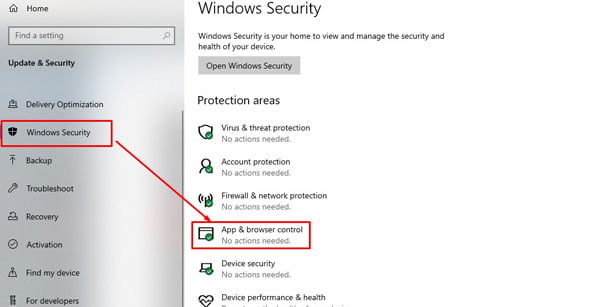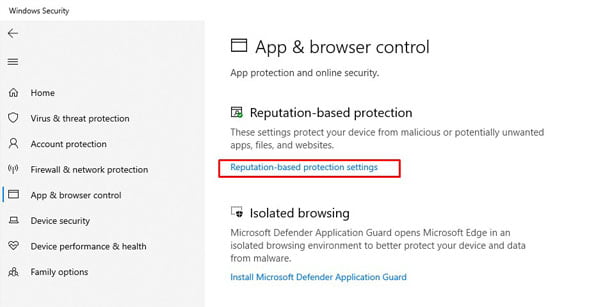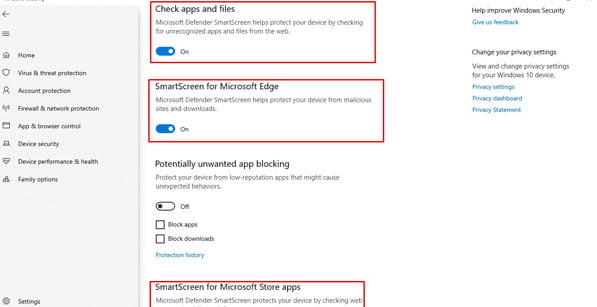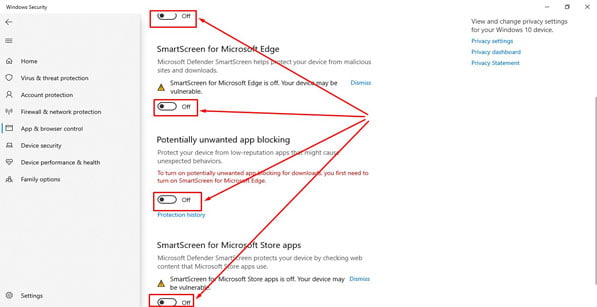The SmartScreen filter is a built-in Windows 10 Security feature that Protects users from malware. Not only does the built-in Windows Defender SmartScreen scan programs and files on your PC, but it also integrates with Microsoft Edge to block phishing and malware websites. This is an important security feature that is best touched by novice users. However, if you’re an experienced user who finds his notifications annoying, we’ll tell you how to Disable SmartScreen Filter or turn it off completely on your Windows 10 PC.
Disable SmartScreen filters in Windows 10
While the extra security that Microsoft SmartScreen provides is important, extra caution can often be a nuisance. So today, we will tell you how to disable Windows 10 SmartScreen Filter on your PC. We’ll tell you more about the feature to give you an idea of what it is and how it works on your computer.
- To disable Microsoft SmartScreen first Go to Settings> Updates and Security.

- Now In the left pane, click/tap on Windows Security And Select ‘App and Browser Control.’ From the right blade.

- Now Click / tap ‘Reputation-based security settings’.

- In the following screen, you will find the option to disable the smart screen for three different purposes – Local Apps and Files, Microsoft Edge, and Microsoft Store.

- From here, You can turn off three options or just one or two If you want. You can only close for Microsoft Edge Or just for the Microsoft Store or across all the apps on your PC. I did just that, as you can see below.

Note: If you don’t want to be bothered with persuasion about what to install and what not to do, you need to turn off another option called ‘potentially unwanted app blocking’ (see screenshot above).
Frequently Asked Questions
Q: What is a smart screen filter in Windows 10?
Originally launched with Windows 1.1, SmartScreen Filter is a built-in security feature that protects users from phishing websites, malicious downloads, and more. This provides an extra layer of security on top of the regular Anti-virus program on Windows PC. If you are about to open a file or install an app that feels insecure. It will show you a warning that it has protected your PC.
Q: Is SmartScreen different from Pop-up Blocker?
Yes, it is. Smartscreen examines the sites you visit and your downloaded files for potential threats. Pop-up blockers, on the other hand. Only block pop-ups, many of which are ads that may be annoying, but not necessarily malicious.
Q: Is there any way to disable SmartScreen filters in Windows 10?
Yes here. The software issues a warning whenever you try to run an app or open a file that it thinks is insecure. However, you have to disable the SmartScreen and install those apps. Or open those sites by clicking through a confirmation dialog anyway. You can disable it completely on your PC.
Q. Is it safe to disable SmartScreen filters?
If you’re an advanced user and know what you’re doing, you can turn it off and avoid the hassle of dealing. With prompts and notifications every time you try to do something on your computer.
Q: Can I just disable SmartScreen for Microsoft Edge?
Yes, you can. Microsoft SmartScreen protects computers in three ways – by scanning apps and files on your PC. Checking for potential malware when downloading apps from the Microsoft Store, and blocking phishing. And fraudulent websites while surfing with Microsoft Edge. You can disable any one of these options individually or all at once, as mentioned in the tutorial.
Disable SmartScreen Filter on Windows 10 PCs
The SmartScreen filter may be an important feature for novice or inexperienced users. But it can be disruptive to Entertainment And annoying for technology-conscious users. So now you know how to disable the Microsoft SmartScreen. Go ahead, do it, but don’t tell us we didn’t warn you of the possible consequences.